Difference Between Vintage and Antique
This Post May Contain Affiliate Links. Please Read Our Disclosure PolicyDo you know your way around an antique shop or are you a vintage fan? Yes, there is a difference between vintage and antique finds, even if both can build beautiful decor schemes. In this post, we’ll dive into what each means and discover ways to integrate both vintage and antique pieces into your home.
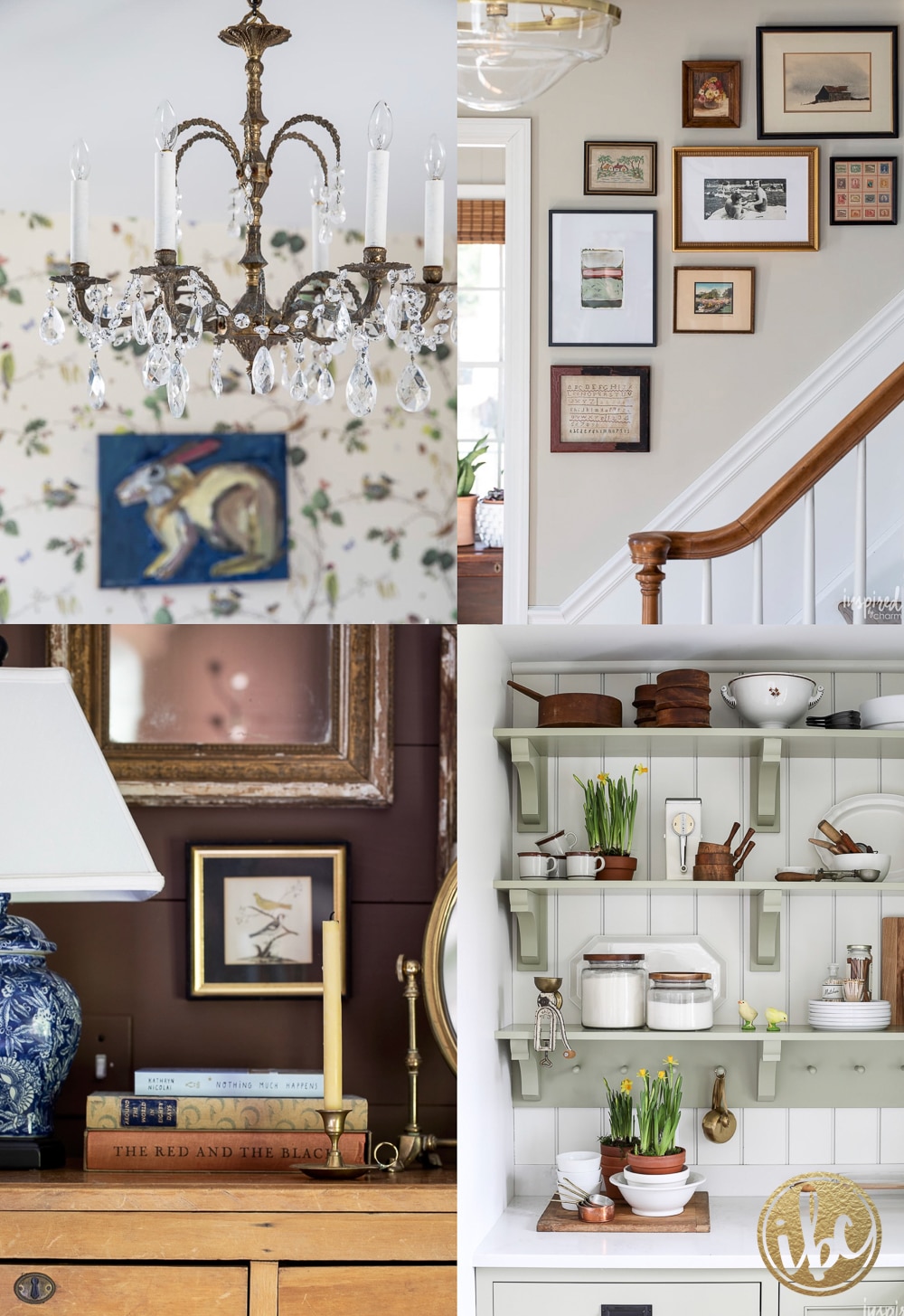
Vintage and antique decor hold a significant place in my home’s design. I’m inspired by timeless pieces – those that looked chic long ago and will continue to shine for years to come.
While vintage and antique are often used synonymously, they actually speak to very different design styles. Discerning between the two is important, understanding their value, historical significance, and maintenance needs.
It’s also important aesthetically, ensuring a seamless integration of modern and older pieces. Vintage and antique aesthetics don’t always make sense when combined.
Knowing the difference between vintage and antique decor will help you achieve a more cohesive design style with beautifully aged pieces that look at home in your space.
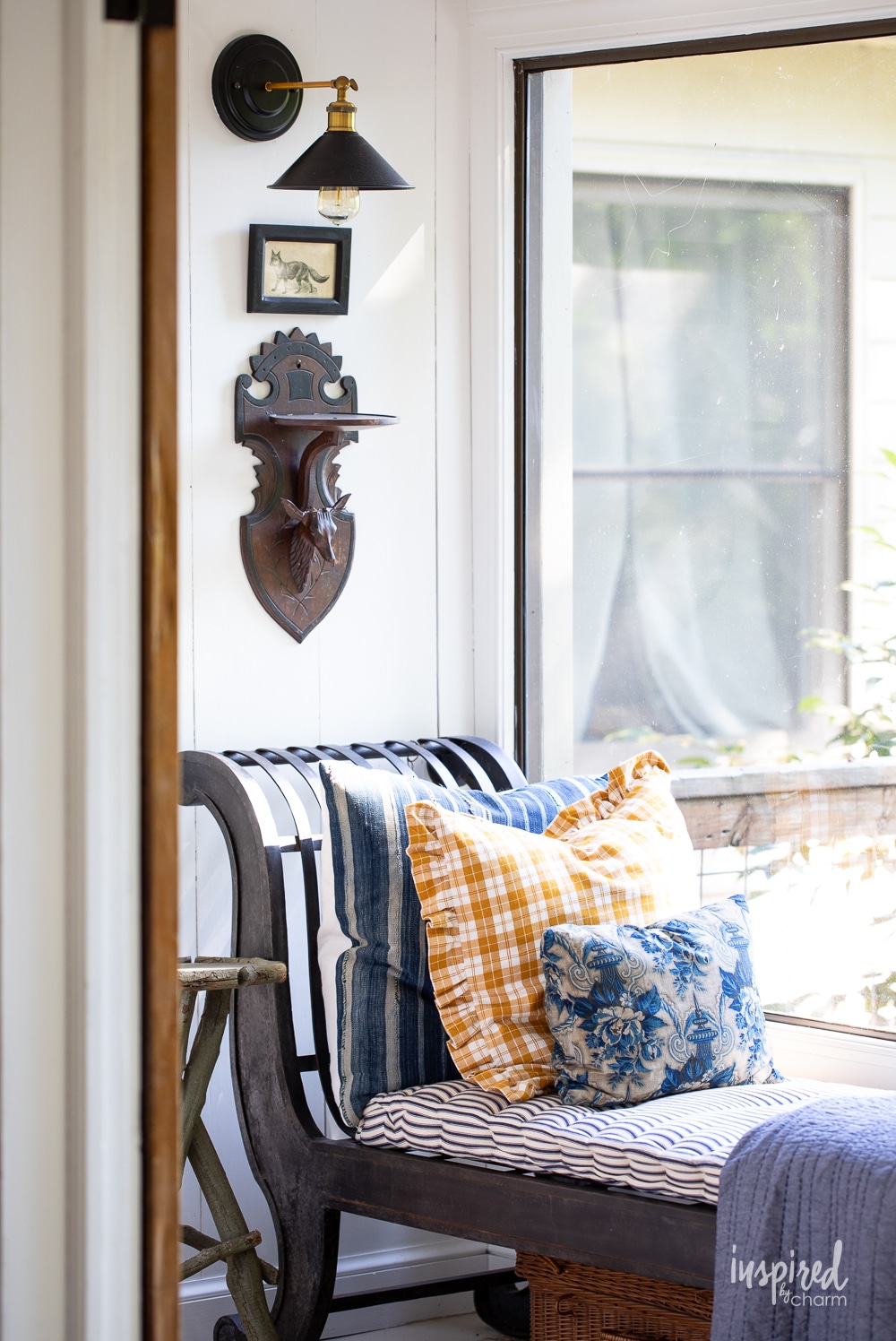
Difference Between Vintage and Antique Decor
So, what is the true difference between vintage and antique decor?
It all comes down to age.
How old a piece is determines whether it is vintage or antique. And there are several visual indicators of age, including popular styles of the eras.
What qualifies as vintage?
A vintage item needs to be between 20 and 100 years old, though this can vary based on the piece.
Other decor can be simply vintage-inspired, with elements harkening back to some of the most nostalgic decades, like the 50s, 60s, and 70s.
True vintage items are often higher quality, as items were made to last longer than current, mass-produced items.
What qualifies as antique?
An antique is defined as being at least 100 years old. Because of its age, antiques are much rarer than vintage items and are widely collected and preserved.
Antiques often come with a higher price point because of their historical significance and rarity.
An antique can also hold cultural and artistic importance, highlighting the design ideals of its era.
If you’re in the market for some gorgeous antique finds, check out my post on 7 Must-Have Tips for Antiquing.

Vintage vs. Antique Aesthetics
Beyond logistical definitions, vintage and vintage aesthetics are quite different.
Understanding these aesthetics can help you identify time periods, estimate worth, and shop in a consistent era.
You can even use these aesthetics to buy vintage or antique-inspired pieces (or make your own at home).
Vintage Aesthetic
The vintage aesthetic will change based on your chosen time period. When combined with various eras, the results look eclectic and styled.
I prefer mixing pieces from several eras to keep the overall effect from looking dated.
Elements of Vintage Aesthetics
- Ample colors and patterns – expect bright colors along with geometric patterns, floral prints, and polka dots.
- Emerging technology – vintage items will harken back to the current technology of the time, from record players to vintage landlines.
- Odes to nostalgia – items that speak to childhood favorites, a pastoral outlook, and simpler days.
- Retrofuturism – past eras were obsessed with the future, expecting amazing advancements in technology. This is reflected in space-inspired, futuristic designs, aiming to be ahead of the curve.
Common Vintage Aesthetics
- Art Deco – geometrics, mirrored furniture, bold lines, polished materials, and lavish ornamentation popular in the 1920s and 30s.
- Hollywood Regency – old Hollywood glamour with metallics, luxurious textiles, opulent jewel accents, and daring patterns popular in the 1940s.
- Mid-Century Modern – natural woods, simplistic, functional design, clean lines, Eames lounge chairs and ottomans.
- Retro Diner – 1950s & 60s nostalgia with cheery Formica furniture, bright colors, and kitschy diner decor.
- Bohemian – 1960s and 70s hippie-chic with layered textiles, mix-and-match patterns, bold colors, and electric, global influences.
- Disco – sparkly and glamorous, 1970s-inspired with mirror balls, shiny furnishings, lavish bar carts, vinyl records, sunken conversation pits, LED lighting, and an electric color palette.
- Neon 80s – bold geometrics, nostalgic cinema references, neon lights, bright colors, vintage arcade games, and dated technologies.
- 90s Whimsigoth – dark and moody color scheme, shabby chic, velvet and lace textiles, ornate chandeliers, romantic florals, moon phase decor, modern lines, black furniture.
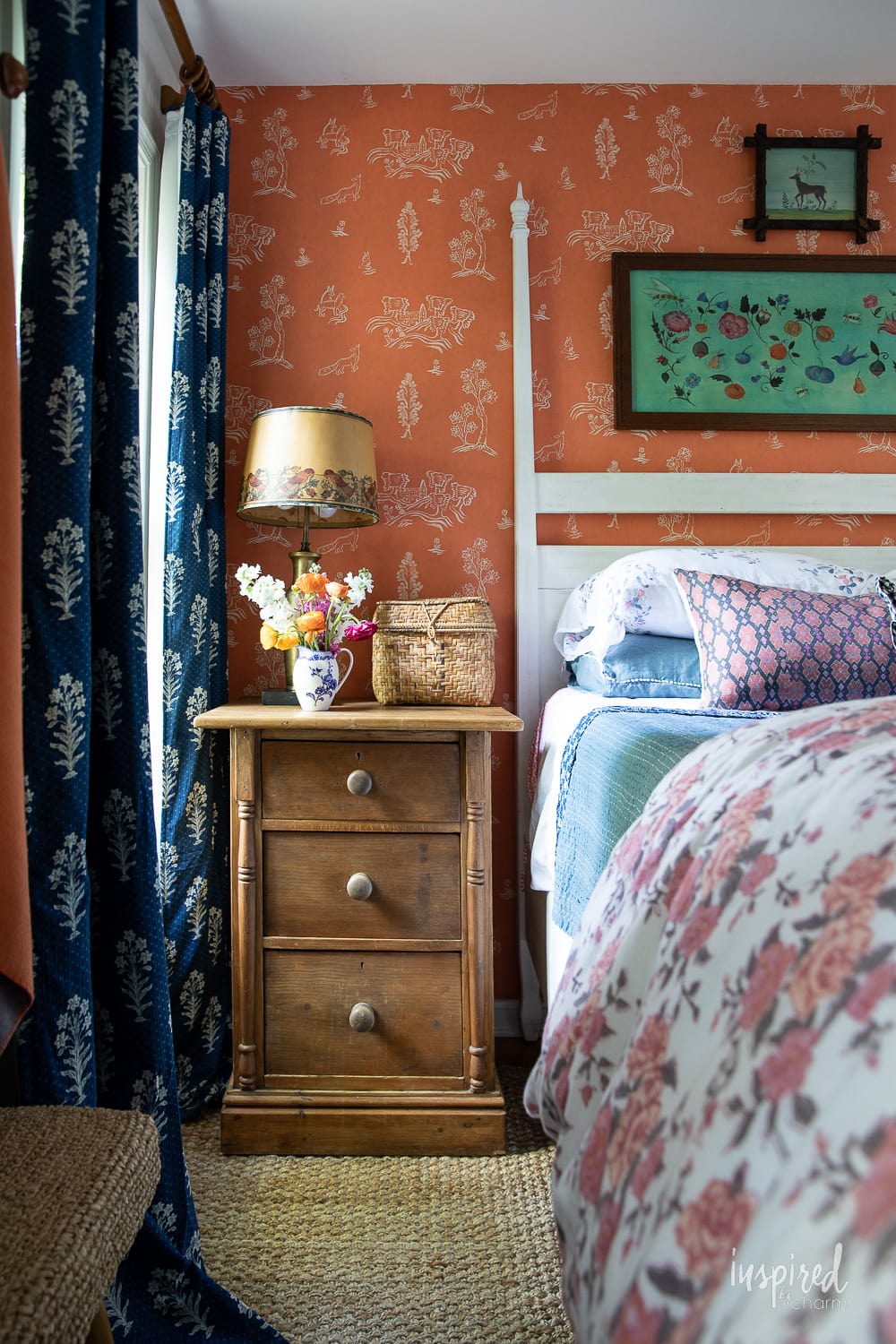
Using vintage aesthetics
If you’re ready to put some vintage decor ideas into play, here are a few ways to seamlessly incorporate vintage aesthetics into your home.
And for more vintage design tips, read my post on How to Add Vintage Charm to Your Home.
1. Mismatched glassware and ceramics
In my opinion, the most beautiful glassware is always secondhand. The craftsmanship and attention to detail are hard to match in modern products.
Collect vintage glassware, tea cups, vintage transferware pitchers, and more for classic entertaining with a nostalgic beauty.
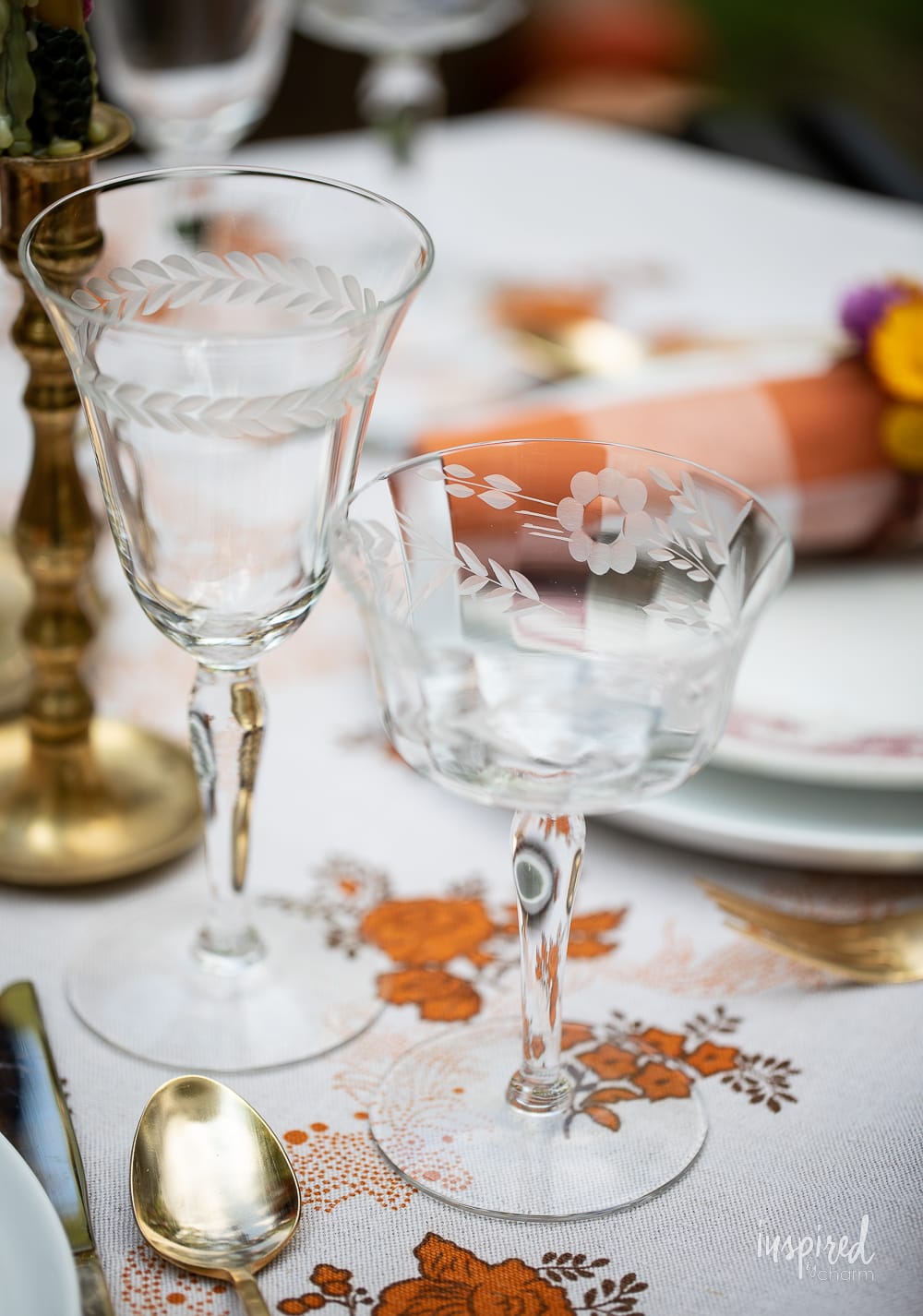
2. Decorate with vintage art
Art is timeless; it’s also one of the easiest ways to incorporate vintage aesthetics into your home.
Hang vintage art, including old maps, prints, vintage book pages, or even a Paint by Number gallery wall.
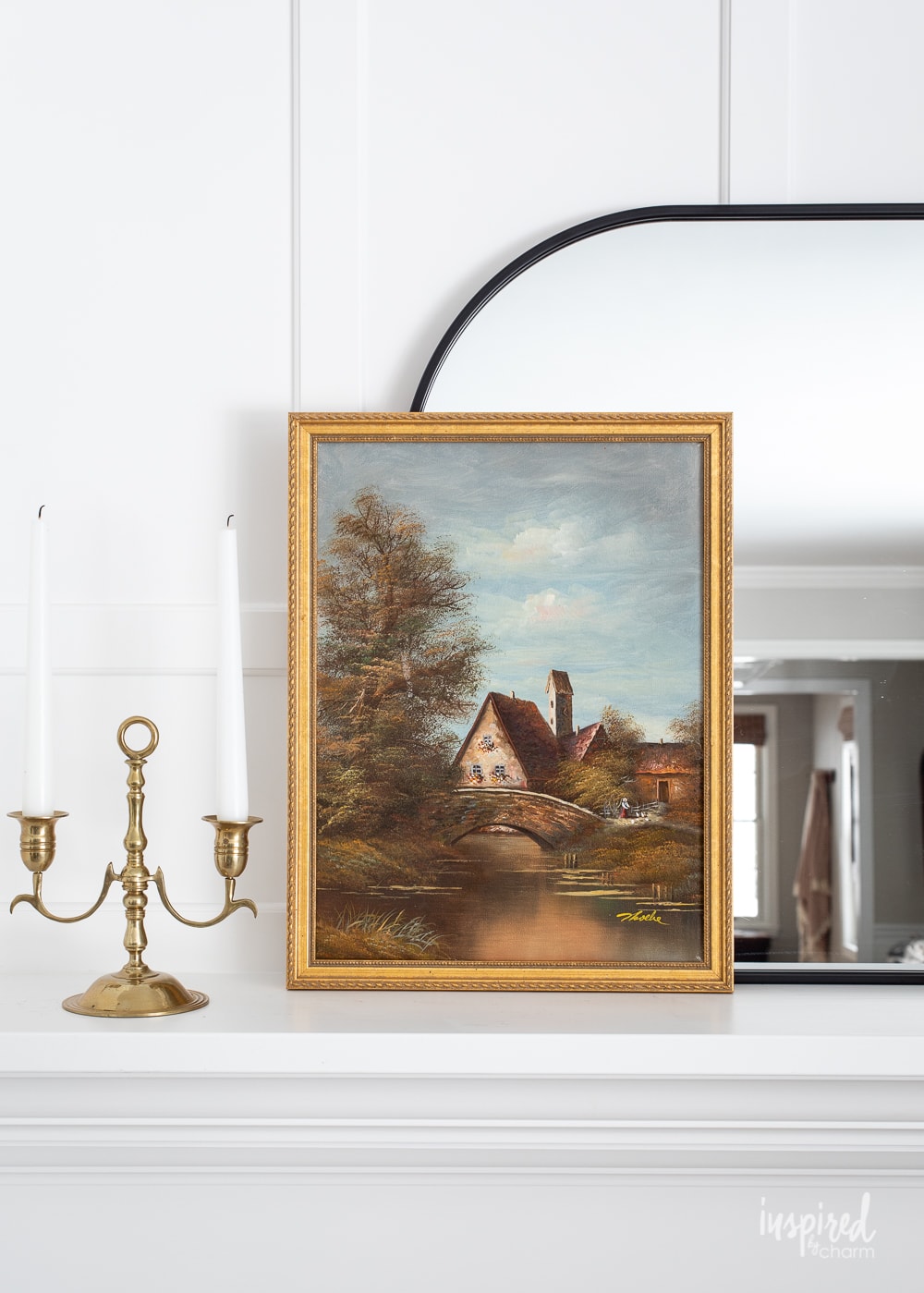
3. Think seasonally
I love including vintage elements in my holiday decor because it’s the perfect opportunity to play on nostalgia.
For Christmas, try my DIY vintage ornament wall decor tree, vintage beaded Christmas ornaments, and vintage Christmas cupboard.
And for fall, create a stunning vintage-inspired fall tablescape to celebrate the season.
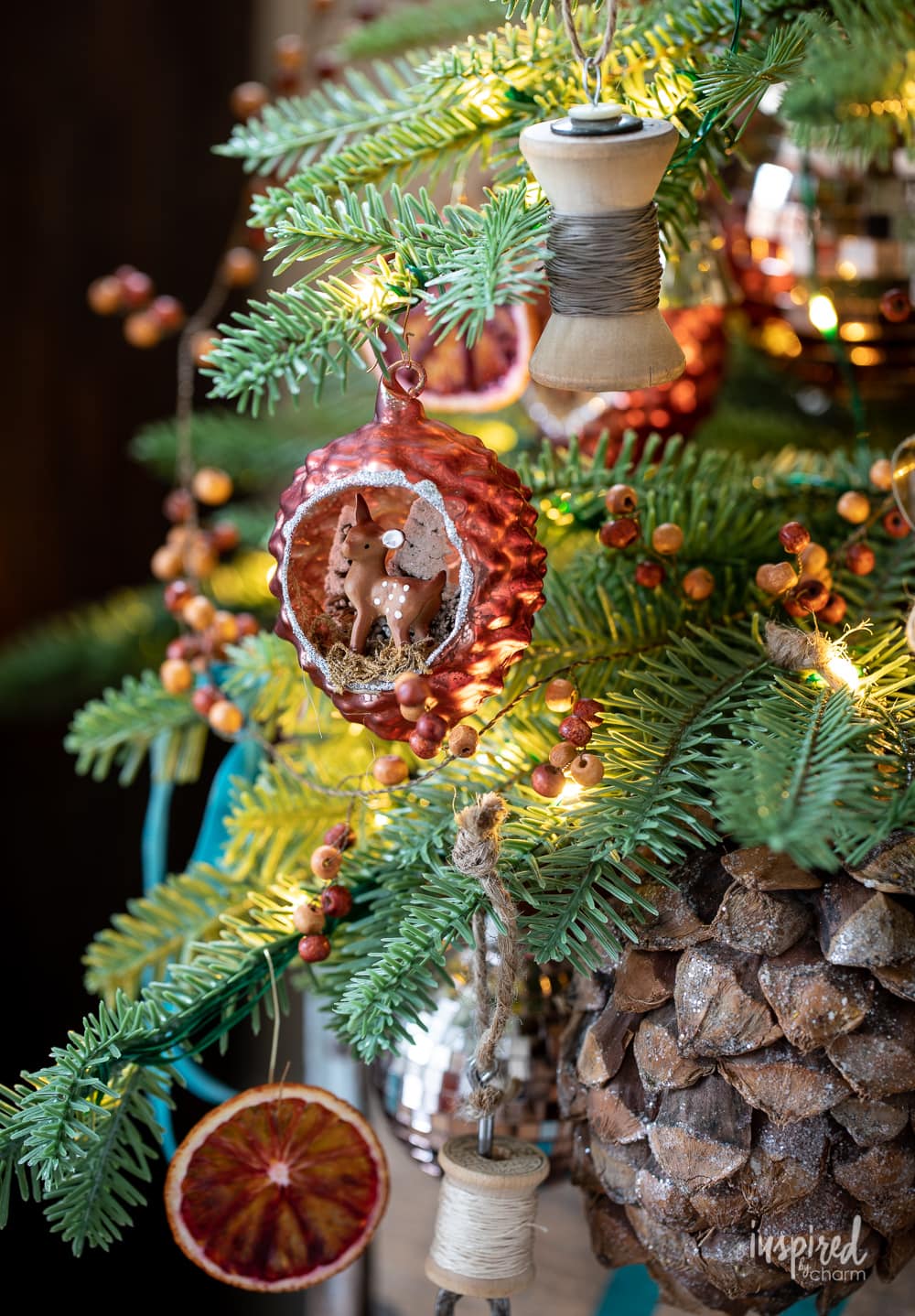
4. Embrace a little wear and tear
Vintage pieces come with some natural wear and tear. And while broken pieces should be mended and cared for, I recommend that you lean into the vintage look.
Celebrate aged appeal with reclaimed wood, faded or distressed finishes, rugs with natural fading, and worn edges.
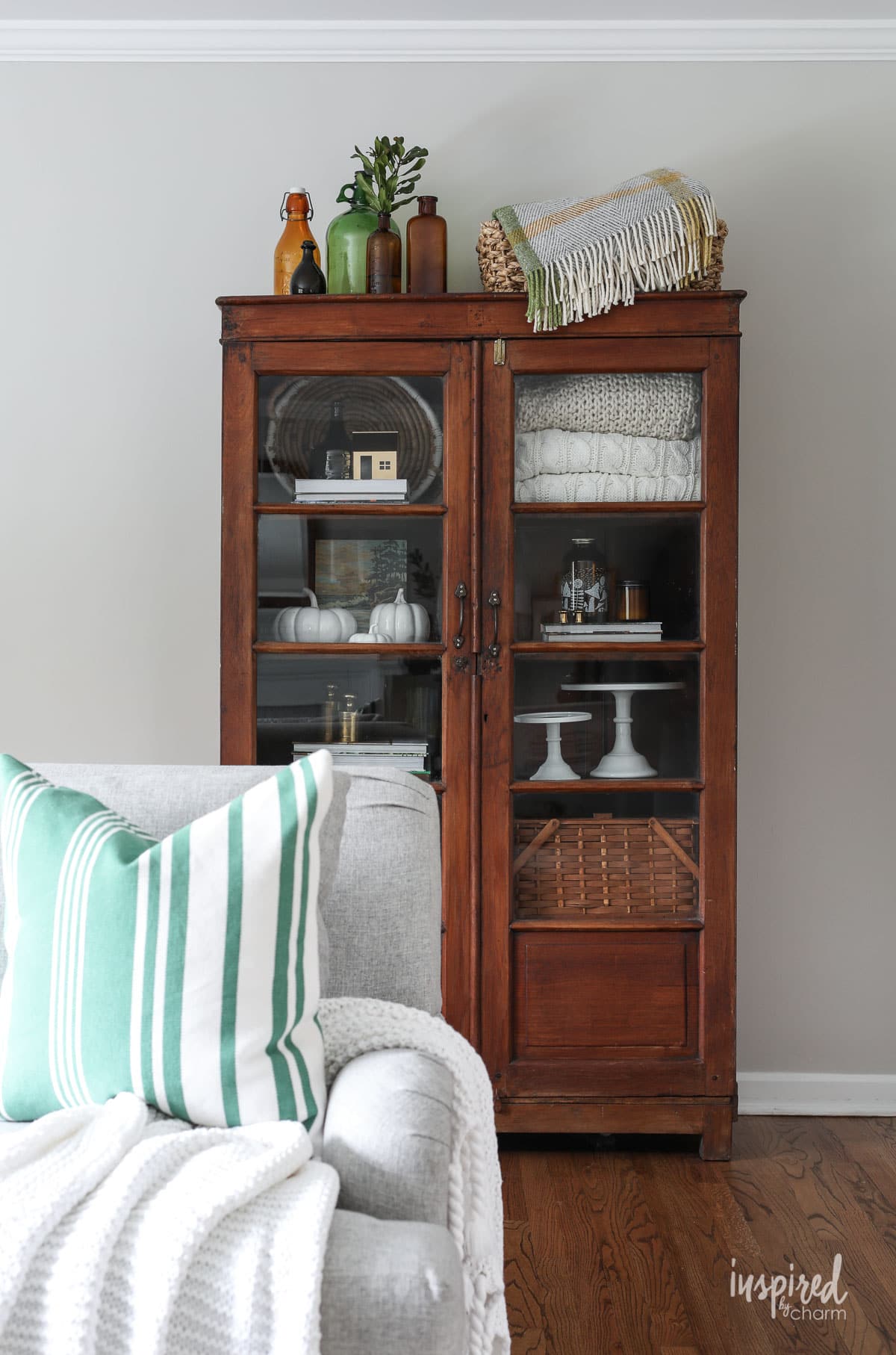
5. Seek balance among the eras
Because vintage aesthetics are so specific, it’s actually best to take bits of different eras that speak to you rather than relying heavily on a single era.
When you use decor from just one style, your space can look too themed and even tacky!
Choosing from a variety of vintage pieces will also add to your personal style without being swallowed by a single aesthetic.
Antique aesthetic
Antique aesthetics are also separated by subcategories, mostly based on their age. Though replicas and DIY versions often mix elements of various antique aesthetics.
Elements of Antique Aesthetic
- Natural elements – made from timeless, natural materials that were commonly available in the time period, including stone, metal, and wood. No plastic here!
- Timeless style – designs that will never go out of style with a refined sense of elegance.
- Aging & patina – signs of aging, patina on metal, and worn edges show the authenticity of the antique.
- Quality craftsmanship – well-made pieces that have stood the test of time. They may be made with lesser-known, older techniques.
- Ornate details – elaborate details and intricate carvings in both subtle and overt design decisions.
- Historical context – values and cultural events of the time will be reflected in both the aesthetic and design.
Common Antique Aesthetics
- Art Nouveau – curved lines, natural patterns, ample florals, and intricate design.
- Victorian – plush, rich, and ornate, with elaborate details, velvet furniture, and beautiful moldings.
- Steampunk – warm, earthy color palette, Edison bulbs, pendant lights, brass and copper, exposed brick, brocade and velvet textiles, leather, wrought iron, wingback chairs, typewriters, exposed pipes.
- Edwardian – focus on natural light, ample airflow, pastel color palette, light natural woods, delicate chandeliers, lightweight fabrics like silk and lace, and marble fireplaces.
Using antique aesthetics
Antiques make amazing conversation starters and are an easy way to add timeless style to your home. Here are just a few tips on How to Incorporate Antiques Into Your Home Decor.
1. Mix with modernity
Unless you want your home to look like a museum (which I’m definitely here for), mix your antique finds with modern pieces.
For example, an antique hourglass sitting on a contemporary shelf. Choose historically different pieces with a similar color palette for a cohesive, beautiful display.
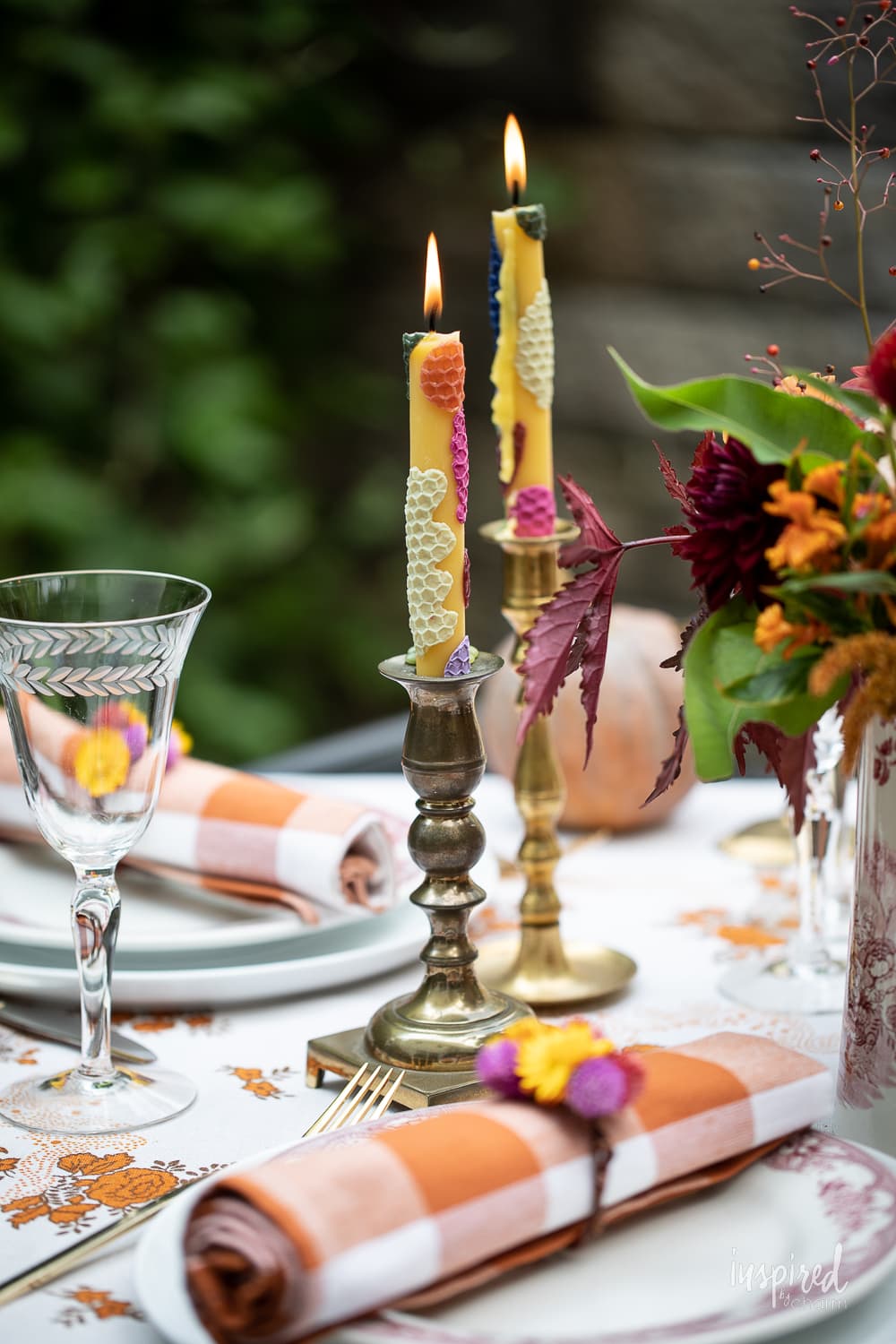
2. Respect its age
Antiques require special care to preserve them.
For example, antique wooden furniture has specific cleaning requirements, regular dusting, and oiling.
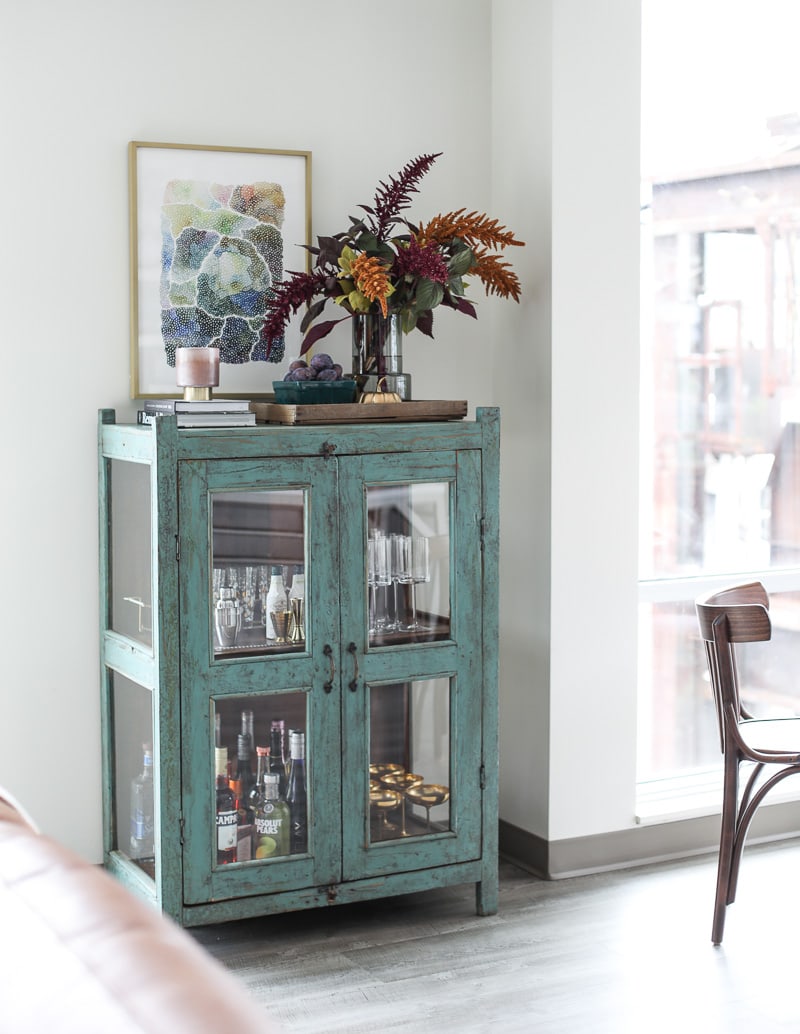
3. Think thematically
While vintage aesthetics are best when mixed and matched, antique aesthetics actually look better when following a consistent theme.
Choose a single antique aesthetic like Edwardian or Art Nouveau to mix with your modern pieces.
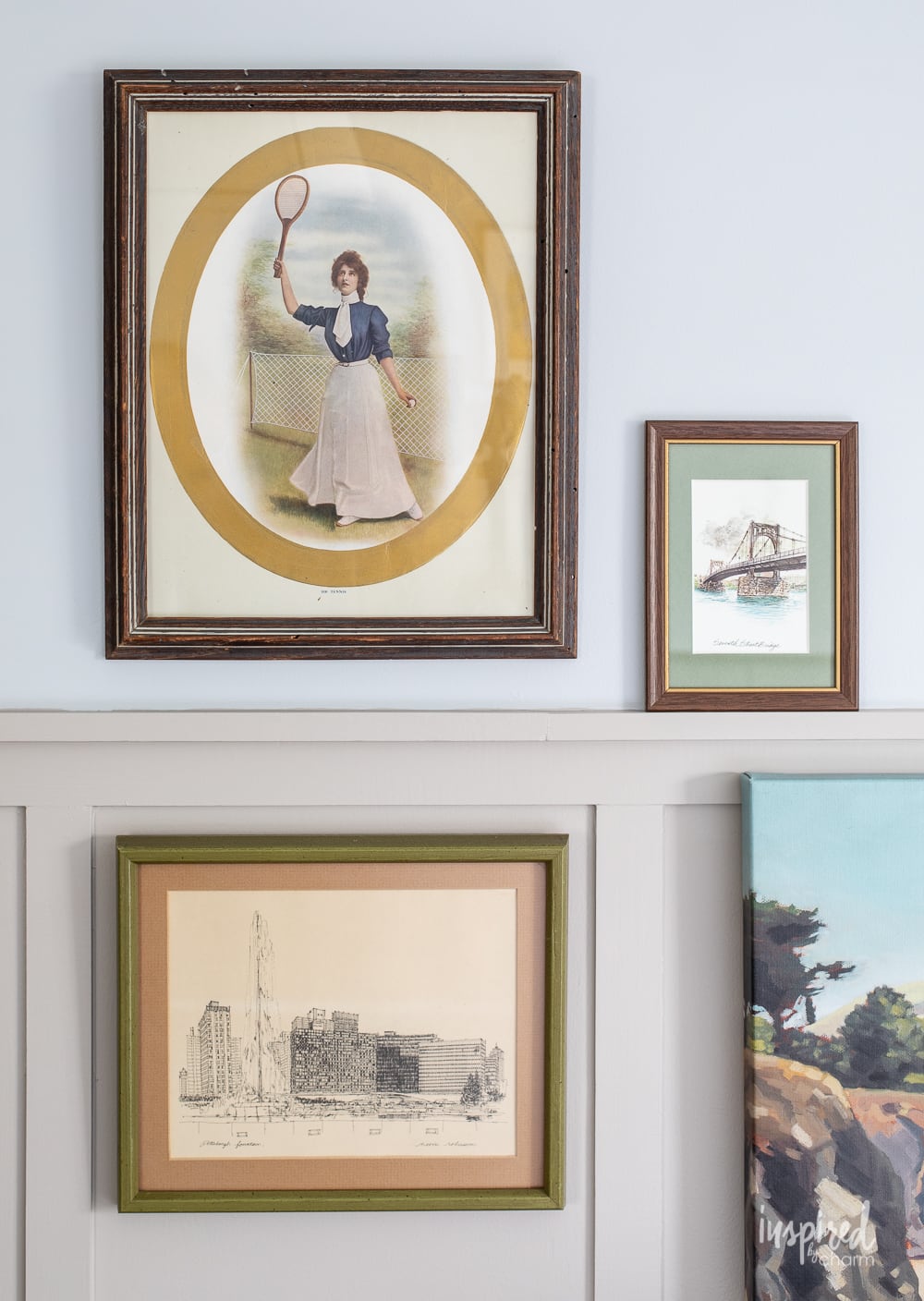
4. Prize authenticity
Buying authentic antiques is always preferable both for its historical beauty and superb craftsmanship.
Paying more for an authentic piece is well worth the price point.
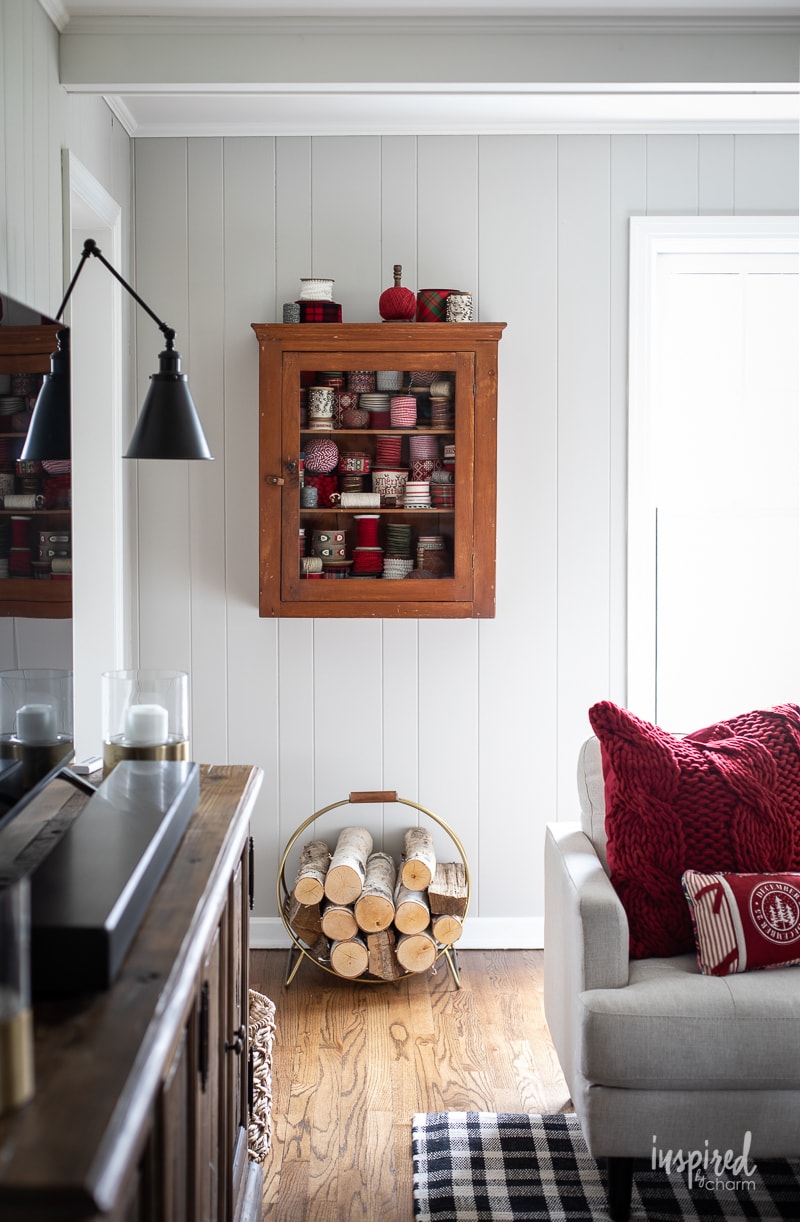
5. Choose multi-functional pieces
Finally, play with function.
For example, vintage trunks or stacked suitcases can be used for end tables, TV stands, and coffee tables (remember your coasters, please!).
This is a good way to use antique items you love every day, not just on rare occasions.
Final Thoughts
When seeking second-hand decor, it’s important to understand the difference between vintage and antique pieces – both logistically and aesthetically.
This understanding will help you curate a beautiful collection that fits seamlessly into your home. Let me know your favorite vintage and antique finds in the comments below.
Happy hunting!
More Vintage / Antique Ideas You’ll Love
- Antique Finds for my Primary Bedroom
- Vintage-Inspired Christmas Gift Tags (Free Printable)
- My Latest Vintage Finds (Antiquing with Charm)
- Vintage Metal Tray Gallery Wall
- DIY Vintage Christmas Ornament Wreath
- Vintage Modern Christmas Table Decor
- Vintage Chicken Crate: Outdoor Wall Decor
Want more from Inspired by Charm? Join the IBC Mailing List for inspiration in your inbox! Follow along on Instagram and TikTok for daily updates and behind-the-scenes looks at my processes. There’s even more inspiration on Facebook and Pinterest!


Thank you for clarifying ‘antique’ and ‘vintage’. Growing up in a home where my parents were antique collections, I can usually identify one from the other. What kills me is when an item is termed ‘antique’ when it is actually from the ’40’s or ’50’s. I wish more people could understand that there is a difference.
I love your blog and check every day for updates. Keep up the good work.
You’re so welcome! And thank you Mary!
xo Michael